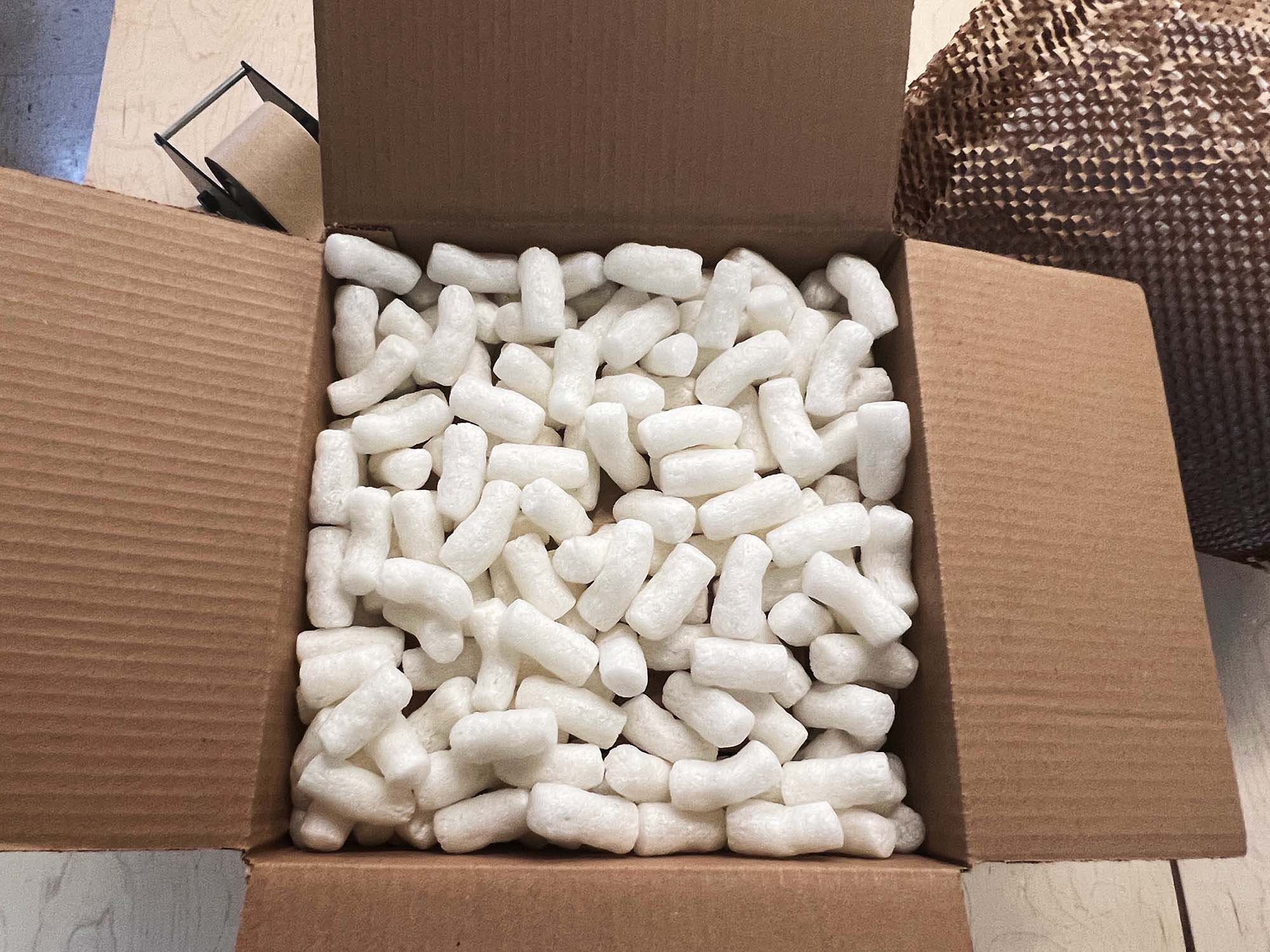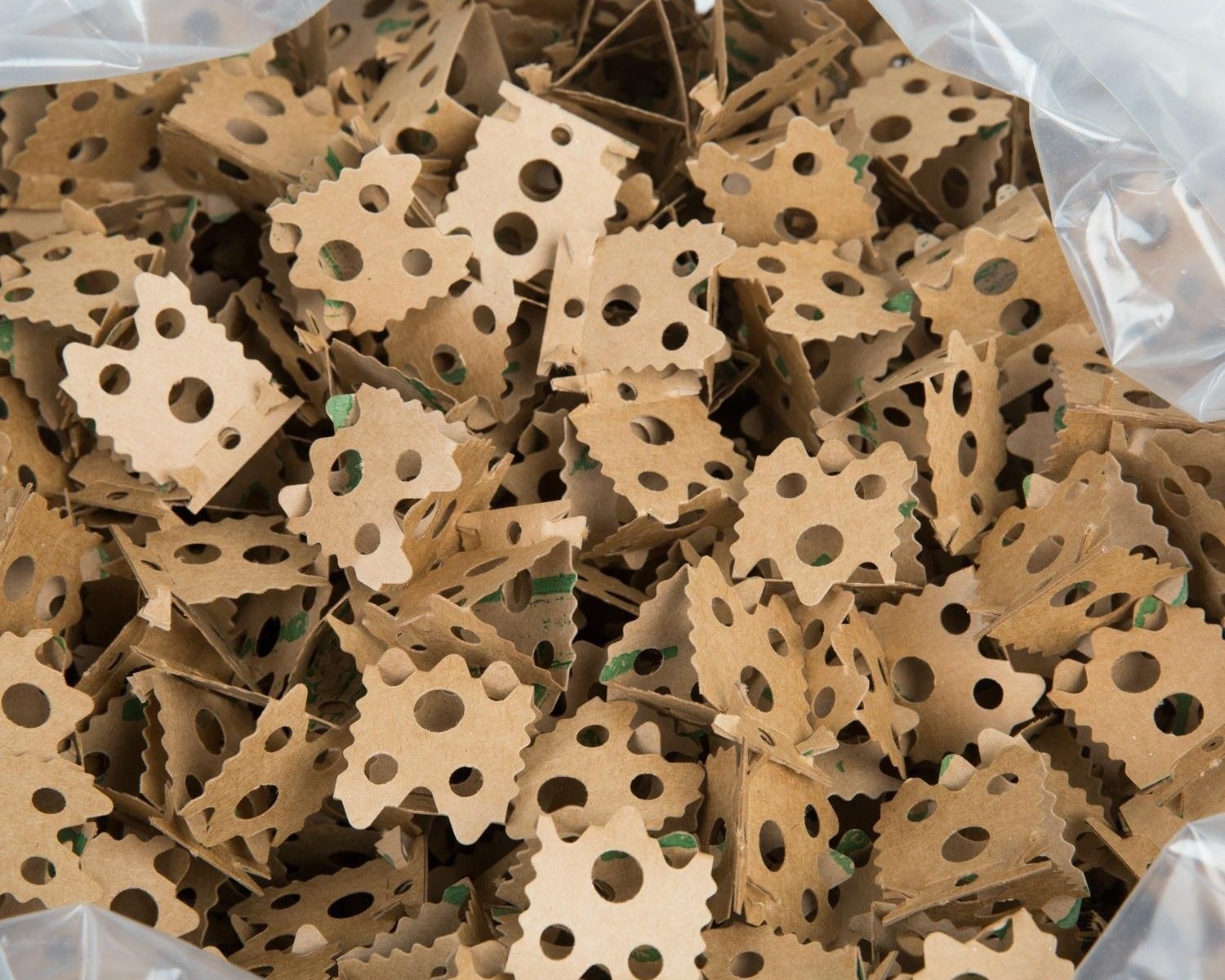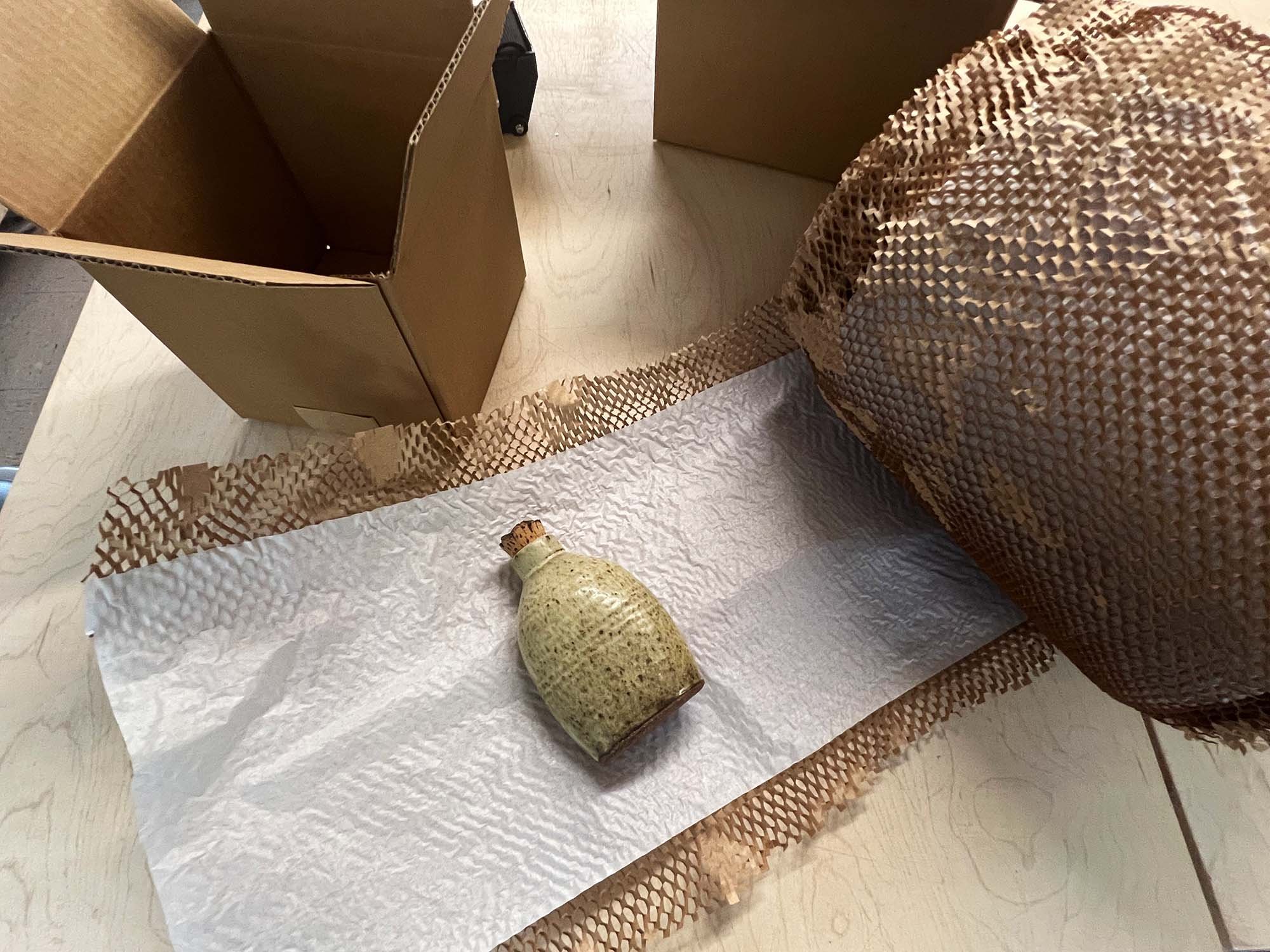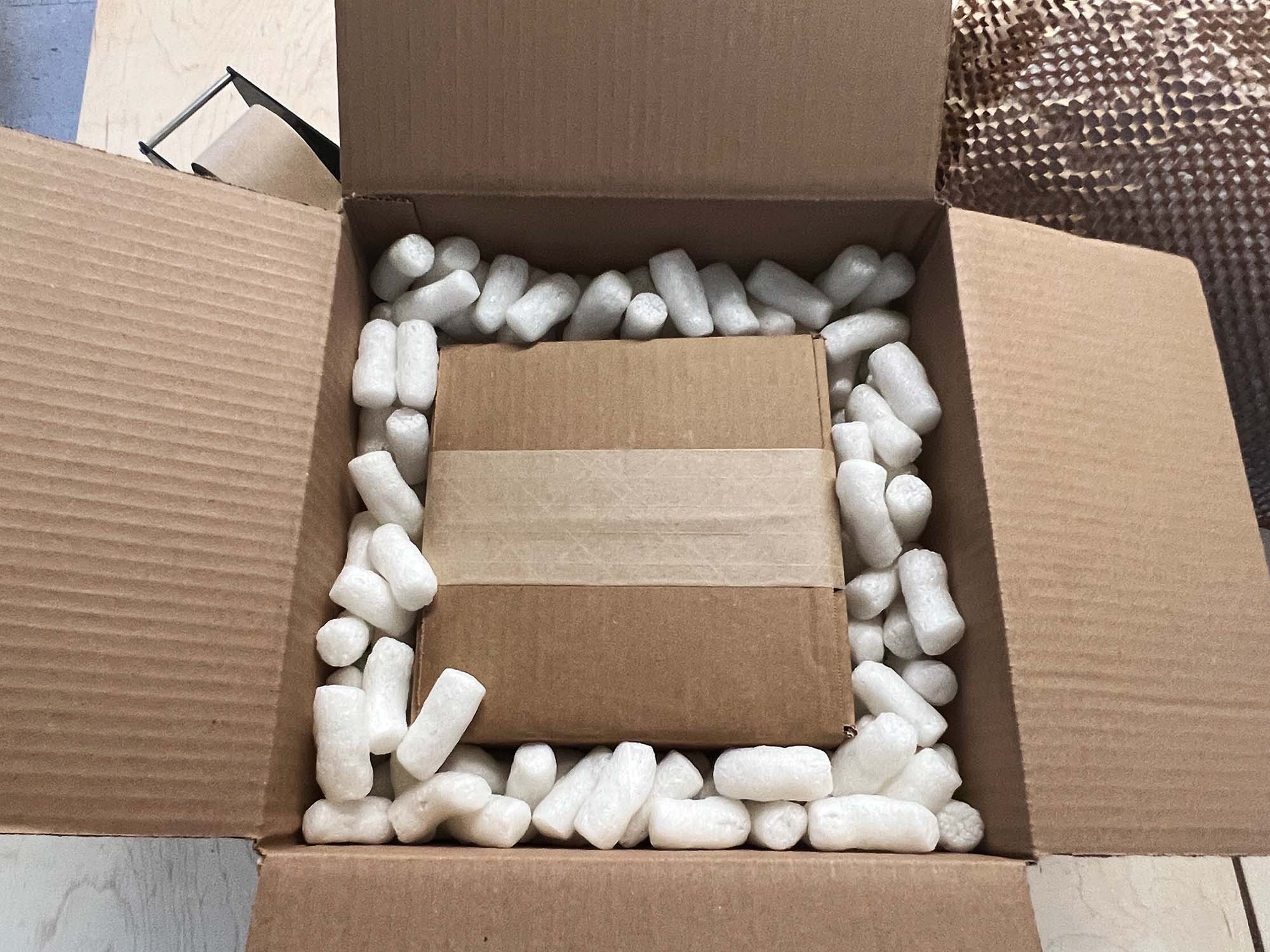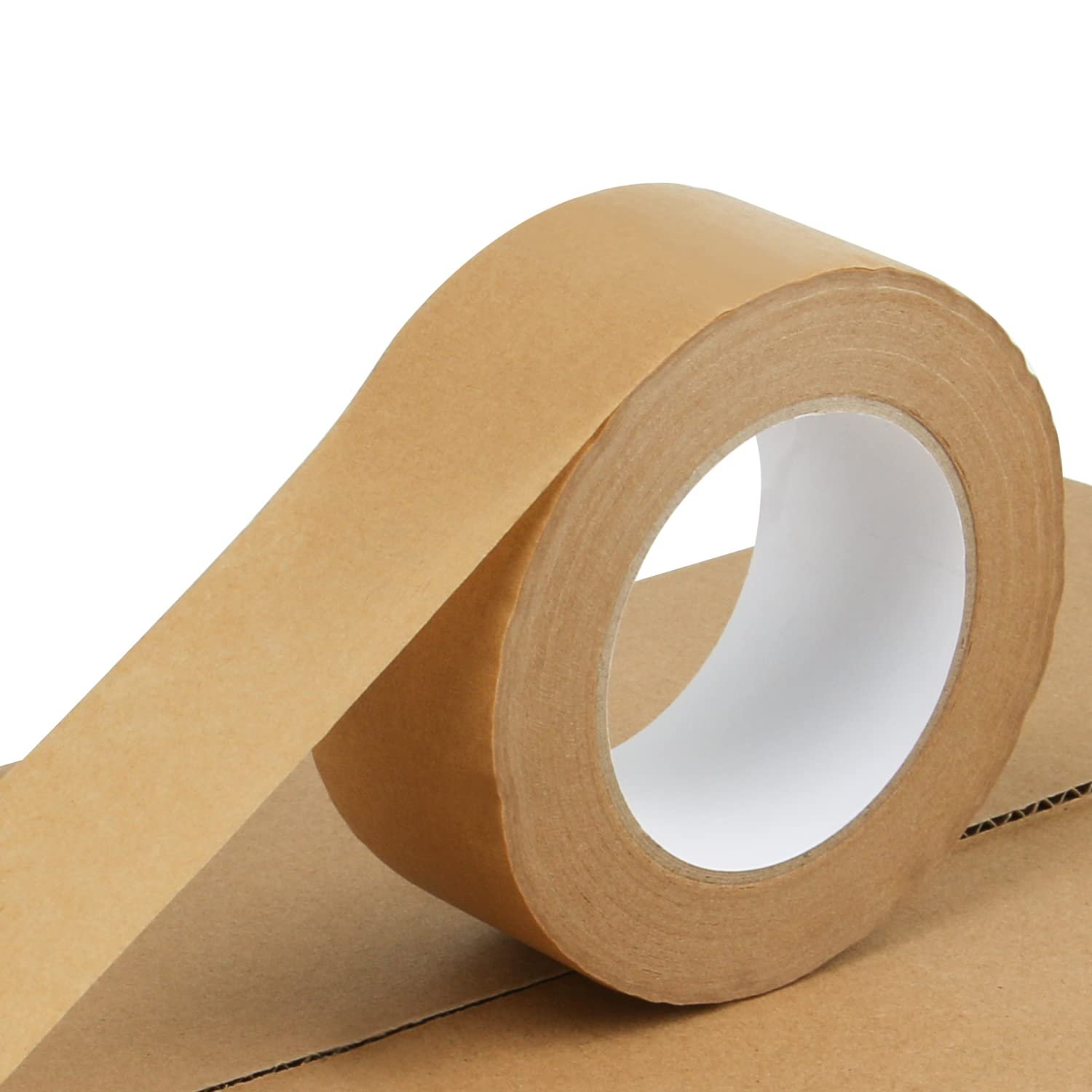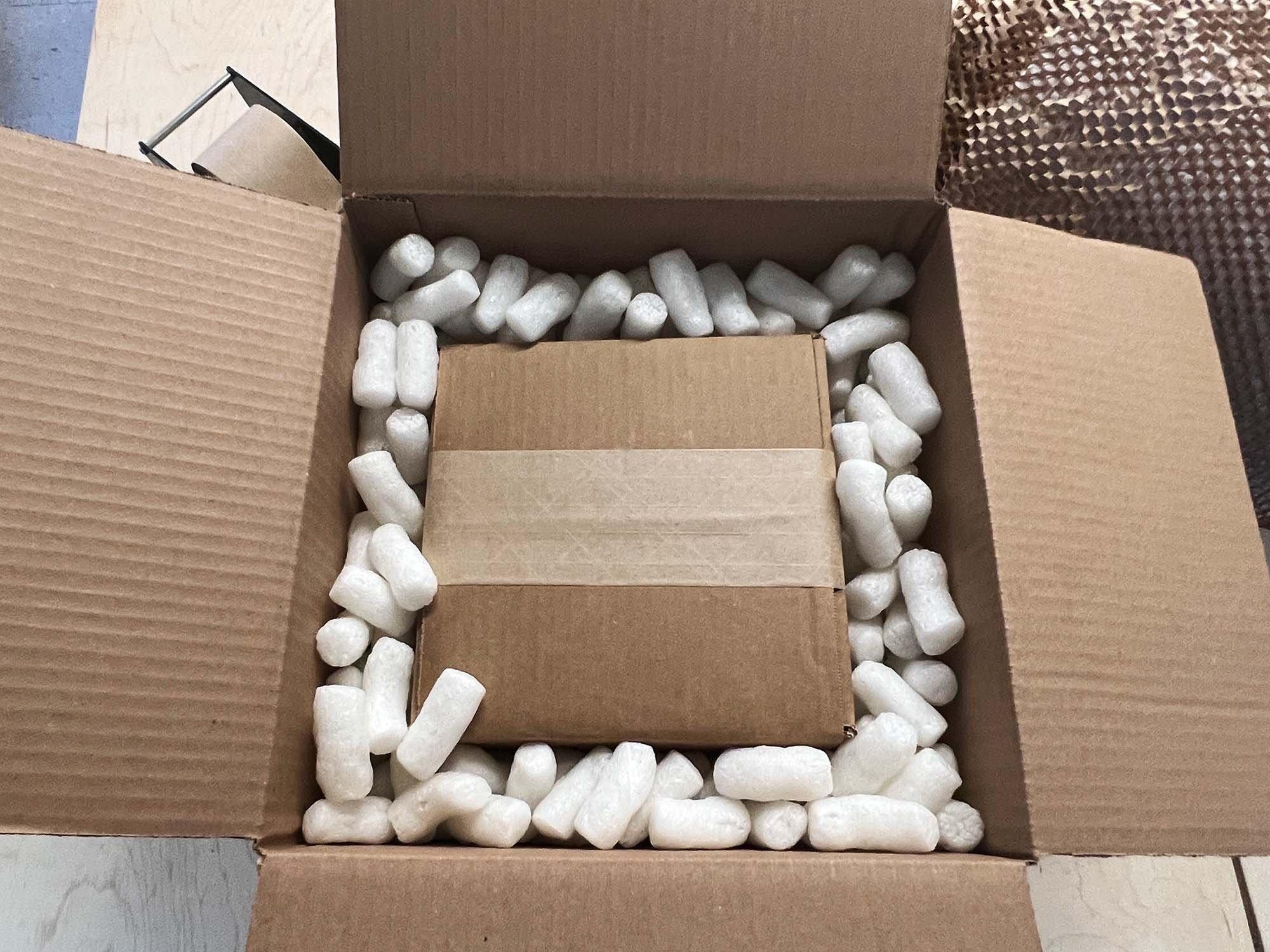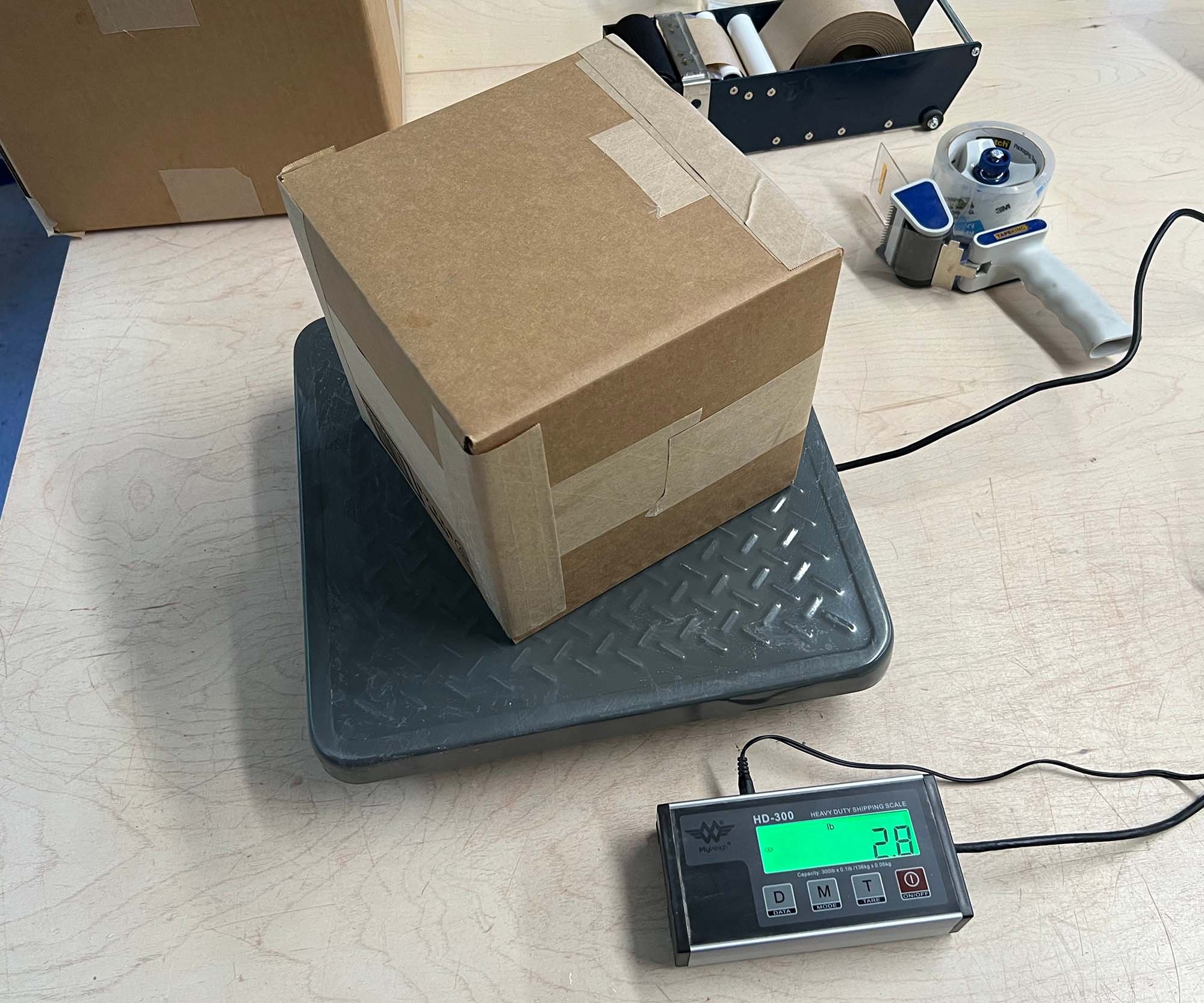Packing and shipping can involve a lot of resources, but these days there are a lot of great options for greener packing, including biodegradable packing peanuts, honeycomb paper wrapping that is just as good as bubble wrap, and a variety of options for loose fill. In my experience, these materials are just as good or better than traditional plastic shipping materials, and they are competitively priced.
Of course, reusing any kind of packing material is also a great option. Bubble wrap and foam can be long lasting and used over and over. But in this post, we’ll focus on shipping supplies made from renewable materials such as paper, cardboard, and corn starch.
Void Fill and Packing Peanuts
Corn starch Packing Peanuts
Packing peanuts are one of the best ways to fill up empty space in a box, and biodegradable corn starch peanuts are great option rather than using styrofoam peanuts. The corn starch peanuts cost about the same and are just as easy to use and are reusable, as long as they don’t get wet. (They will shrink or turn to goo if they get wet.)
For buying packing peanuts, unfortunately there aren’t a lot of great online options. The bags of peanuts are big and bulky, resulting in a high shipping cost. Some retailers, especially online, list the peanuts with extra shipping included. For peanuts, it’s best to go with your local shipping supplier. If you bundle your purchase with boxes and tape, it should be quite economical to get a delivery as needed.
For smaller volumes of peanuts, check the links below.
ExpandOS
Expandos are cardboard loose fill that lock in place for easy shipping.
ExpandOS are a newer, interesting option for loose fill. Made of small, cut pieces of cardboard, they easily fill up space and are infinitely re-usable, or easy to recycle. I have seen pottery shipped in a single box with just ExpandOS. Unfortunatley, they are a bit harder to find but hopefully they will be distributed more widely soon.
Other Options for Loose Fill
If you need to fill up space, especially for the double box method of shipping, you can also use newspaper or wadded-up craft paper. Newspaper can get ink on your hands and whatever you are shipping, but in a pinch it works.
The back of a cardboard shredding machine.
You can also use shredded or perforate cardboard. This makes the most sense for heavier objects that could really damage lighter fill, or if you have a ready supply of cardboard boxes to shred. The cardboard shredding machines are not cheap, but it might make sense if you do a lot of shipping. They usually cost around $2,000 and up, but may pay off in the long run if you have a ready access to free cardboard.
Wrapping and Cushioning Material
There are two main options for wrapping and cushioning material, both of which can easily and effectively replace bubble wrap.
Honeycomb Wrapping Paper
Honeycomb wrapping paper comes in a tightly bound roll of paper, but as you pull and stretch it becomes a great cushioning and wrapping paper. It’s also easy to rip pieces of the roll and the various edges will catch and hold as you wrap it, so you often don’t need tape to hold it in place. It can also double as void fill if you wad it up.
Honeycomb paper is a great addition to your shipping supplies and is cost effective as well. It’s typically available in different widths and lengths of rolls, from a variety of suppliers.
Ranpak Ready Roll
Here you can see Ranpak Ready Roll in use, with an already-stretched honeycomb paper and inner liner of tissue paper.
Ranpak is sort-of deluxe version of honeycomb packing paper. It comes pre-stretched and expanded, and has a sheet of tissue paper on the inside. It’s harder to rip, so you will usually want to cut off pieces, but it is effective at cushioning. It is especially great for pottery, or anywhere that you would consider using bubble wrap.
It’s generally about double the price of plain honeycomb packing paper—around $20 for 100 feet— but it is a nice option that feels a bit more “presentable” if you are shipping to customers. It’s also available in large containers with as many as 750 feet of material and a box designed to rip the two layers cleanly.
Boxes and Shipping Tape
To my knowledge, there aren’t necessarily “greener” cardboard shipping box options as most boxes typically contain some recycled content already. But it’s worth looking into the details, to find a manufacturer with the highest recycled content possible.
Greener Packing Tape
This metal Kraft tape dispenser is designed for use with water-activated, gummed tape.
A box with gummed paper tape nested inside another box with biodegradable packing peanuts.
For tape, there are two options: gummed kraft tape and gummed kraft tape with fiberglass string. The tape with fiberglass string is stronger and more common, but unfortunately, the fiberglass is not recyclable.
Using gummed tape does take some set up as you have to activate the gum with water.
For occasional shipping, you can cut the tape with scissors and apply water with a sponge. This makes a bit of a mess on your table but it works.
If you are shipping more often, a tape dispenser with a water reservoir is very helpful. In my studio, I use a basic metal kraft tape dispenser, but there are higher tech models out there, or cheaper options made with plastic. All of them help you dispense, wet, and cut the tape.
For Kraft tape with fiberglass, I’ve tried a few options and the most dependable option was the Duck Brand Fiberglass Reinforced Kraft tape. While this tape is not recyclable, it does seal very well and is easy to work with.
For regular gummed tape without the fiberglass reinforcing, there are a variety of options, usually generic. Some are water activated, and others are self adhering.
Summary
This post has covered a variety of ways to pack and ship using materials made from renewable sources. Many of these are just as effective as foam and styrofoam, and are usually competitively priced.
How do you pack and ship fragile objects? What are green options that you use? Let us know in the comments.
You May Also Enjoy:
How to Ship Ceramics and Other Fragile Objects
Best Scales For Ceramic Studios and Art Workshops
